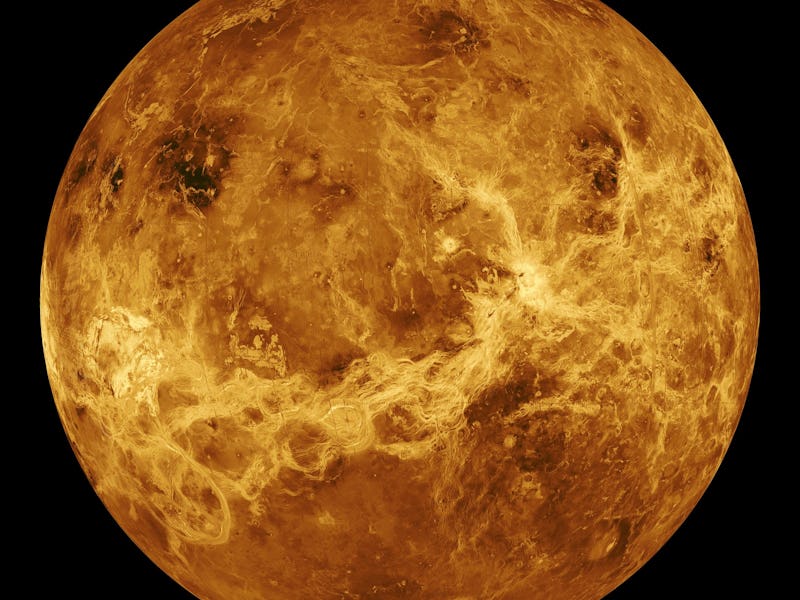Venus’ Clouds Could Harbor Alien Life, But NASA Needs to Investigate
The planet's mysterious dark patches have raised new questions.

The surface conditions on Venus might be too hostile to host life, but that doesn’t mean its clouds can’t offer a sweet hideaway. Astronomers have published a case for the planet’s atmosphere as a possible host for extraterrestrial microbial life.
The feasibility of life on Venus’ clouds was first raised by biophysicist Harold Morowitz and astronomer Carl Sagan in 1967. While the idea has been discussed for decades, researchers at the University of Wisconsin-Madison’s Space Science and Engineering Center are revisiting the old theory with new information on the unexplained dark patches observed in Venus’ clouds. Led by planetary scientist Sanjay Limaye, the team of astronomers published their study in Astrobiology on Friday.
Limaye, who worked with NASA in the Japan Aerospace Exploration Agency’s Akatsuki mission to Venus, found that the dark patches on Venus’ clouds were made of sulfuric acid and light-absorbing particles similar to those found on Earth. His team theorized that the clouds’ patches are much like the algae blooms found in lakes and oceans, pointing to how patch particles have similar dimensions to Earth-bound bacteria. The only difference is that the particles in the clouds would need to be sustained in the Venusian atmosphere.
Venus Atmospheric Maneuverable Platform, or VAMP.
“Venus has had plenty of time to evolve life on its own,” Limaye said, noting that some theories suggest Venus once had a habitable climate with liquid water on its surface for as long as 2 billion years. “That’s much longer than is believed to have occurred on Mars.” But to know for sure if these dark patches can sustain microbial life, Limaye and his team will need more samples.
Researchers already have an idea about how to acquire those dark patch samples going forward. The Venus Atmospheric Maneuverable Platform, or VAMP, is a concept being developed by Northrop Grumman Aerospace. The aerial platform can fly like a plane but also float like a blimp, allowing it to stay afloat in Venus’s cloud layer for up to a year. VAMP could offer scientists a year’s worth of needed data, and is already being suggested for inclusion in the Venera-D mission, which is under joint study between NASA and Russia’s ROSCOSMOS.
“To really know, we need to go there and sample the clouds,” said the study’s co-author Rakesh Mogul. If VAMP is included in the Venera-D mission to Venus, slated for after 2020, Venus could become vital in the search for organic particles in space.